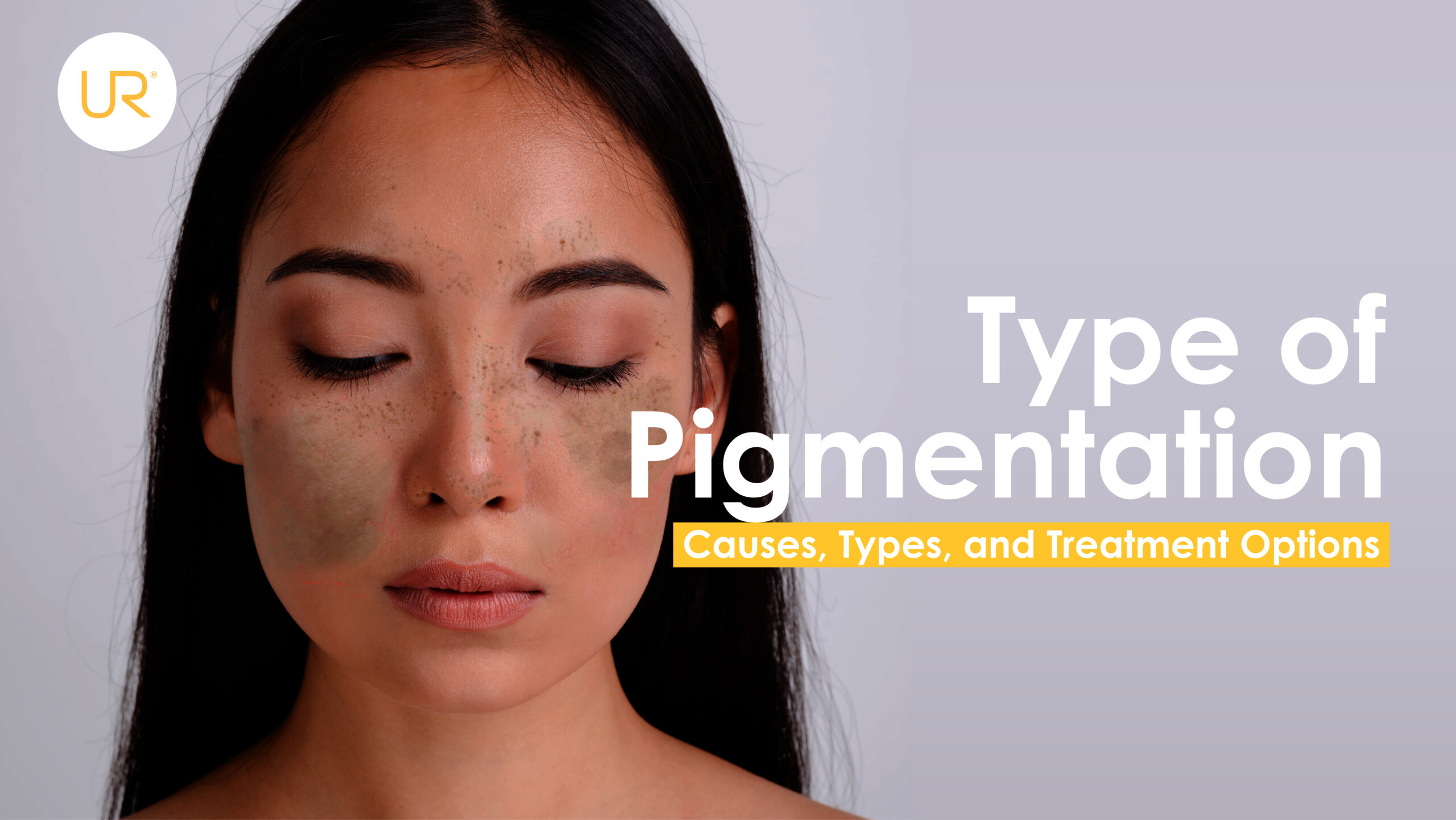
30 May Understanding Pigmentation: Causes, Types, and Treatment Options
Pigmentation refers to the coloring of the skin, which is determined by the presence of a pigment called melanin. While pigmentation variations are natural and often harmless, certain conditions can lead to excessive or uneven pigmentation, causing concern for many individuals. In this article, we will explore the causes, types, and available treatment options for pigmentation-related issues.
Causes of Pigmentation:
- Sun Exposure: Prolonged and unprotected sun exposure is a major cause of pigmentation irregularities, such as sunspots or freckles. The sun’s ultraviolet (UV) rays trigger an overproduction of melanin, resulting in darkened patches on the skin.
- Hormonal Changes: Hormonal fluctuations during pregnancy, menopause, or as a result of hormonal disorders can contribute to the development of pigmentation concerns, such as melasma or chloasma.
- Post-Inflammatory Hyperpigmentation: Skin inflammation caused by acne, eczema, or injury can lead to an increased production of melanin, resulting in dark spots or patches in the affected areas.
- Genetic Factors: Some individuals are genetically predisposed to certain pigmentation disorders, such as vitiligo or albinism, which cause either loss or absence of melanin.
Types of Pigmentation:
- Melasma: This common pigmentation condition manifests as brown or grayish patches, usually on the face. It is often triggered by hormonal factors and sun exposure.
- Freckles: Freckles are small, flat, and light brown spots that tend to be genetic in nature and typically darken with sun exposure.
- Sunspots: Also known as age spots or liver spots, sunspots are flat, tan, or brown spots that appear on sun-exposed areas of the skin, primarily in older individuals.
- Post-Inflammatory Hyperpigmentation (PIH): PIH occurs as a result of inflammation or injury to the skin, leaving darkened areas that may persist for months.
Treatment Options:
- Topical Treatments: Over-the-counter or prescription creams containing ingredients like hydroquinone, retinoids, kojic acid, or corticosteroids can help lighten pigmentation over time.
- Chemical Peels: These treatments involve applying a chemical solution to the skin to exfoliate the outer layers, promoting the growth of new, evenly pigmented skin.
- Laser Therapy: Laser treatments target the pigment in the affected areas, breaking it down to fade pigmentation irregularities. Different laser types, such as IPL or Q-switched lasers, are used based on the specific condition being treated.
- Cryotherapy: Cryotherapy involves freezing the pigmented areas with liquid nitrogen, causing the darkened skin to peel off and reveal new skin with more balanced pigmentation.
Prevention and Maintenance:
- Sun Protection: Regularly applying broad-spectrum sunscreen, wearing protective clothing, and seeking shade can help prevent further pigmentation issues caused by sun exposure.
- Proper Skincare: Establishing a consistent skincare routine that includes gentle cleansing, exfoliation, and moisturizing can help maintain overall skin health and reduce the risk of pigmentation problems.
- Hormonal Balance: For pigmentation issues related to hormonal changes, consulting with a healthcare professional to address hormonal imbalances or explore suitable treatment options can be beneficial.
- Avoiding Skin Irritants: Minimizing exposure to harsh chemicals, irritants, or abrasive products can help prevent inflammation and subsequent pigmentation problems.
- Regular Skin Checkups: Routine visits to a dermatologist or skincare specialist can help identify early signs of pigmentation concerns and provide appropriate guidance for prevention and treatment.
Pigmentation issues can affect individuals of all ages and skin types, causing distress and affecting self-esteem. Understanding the causes
and types of pigmentation is the first step towards finding suitable treatment options. From sunspots to melasma, each condition requires a tailored approach. Fortunately, various treatment options, including topical creams, chemical peels, laser therapy, and cryotherapy, are available to address pigmentation concerns.
However, prevention and maintenance should also be prioritized. Protecting the skin from harmful UV rays through sun protection measures, maintaining a proper skincare routine, and addressing hormonal imbalances are essential steps in preventing further pigmentation problems. Additionally, avoiding skin irritants and regularly consulting with skincare professionals can contribute to maintaining balanced and healthy skin.
Remember, achieving even and radiant skin may take time and require a combination of treatments and preventive measures. It’s crucial to consult with a dermatologist or skincare specialist who can assess your specific situation and recommend the most suitable options for your pigmentation concerns.
By understanding the causes, types, and treatment options available, individuals can take control of their pigmentation concerns and work towards achieving healthier, more even-toned skin. With proper care and professional guidance, it’s possible to effectively manage and improve pigmentation issues, restoring confidence and promoting overall skin well-being.


